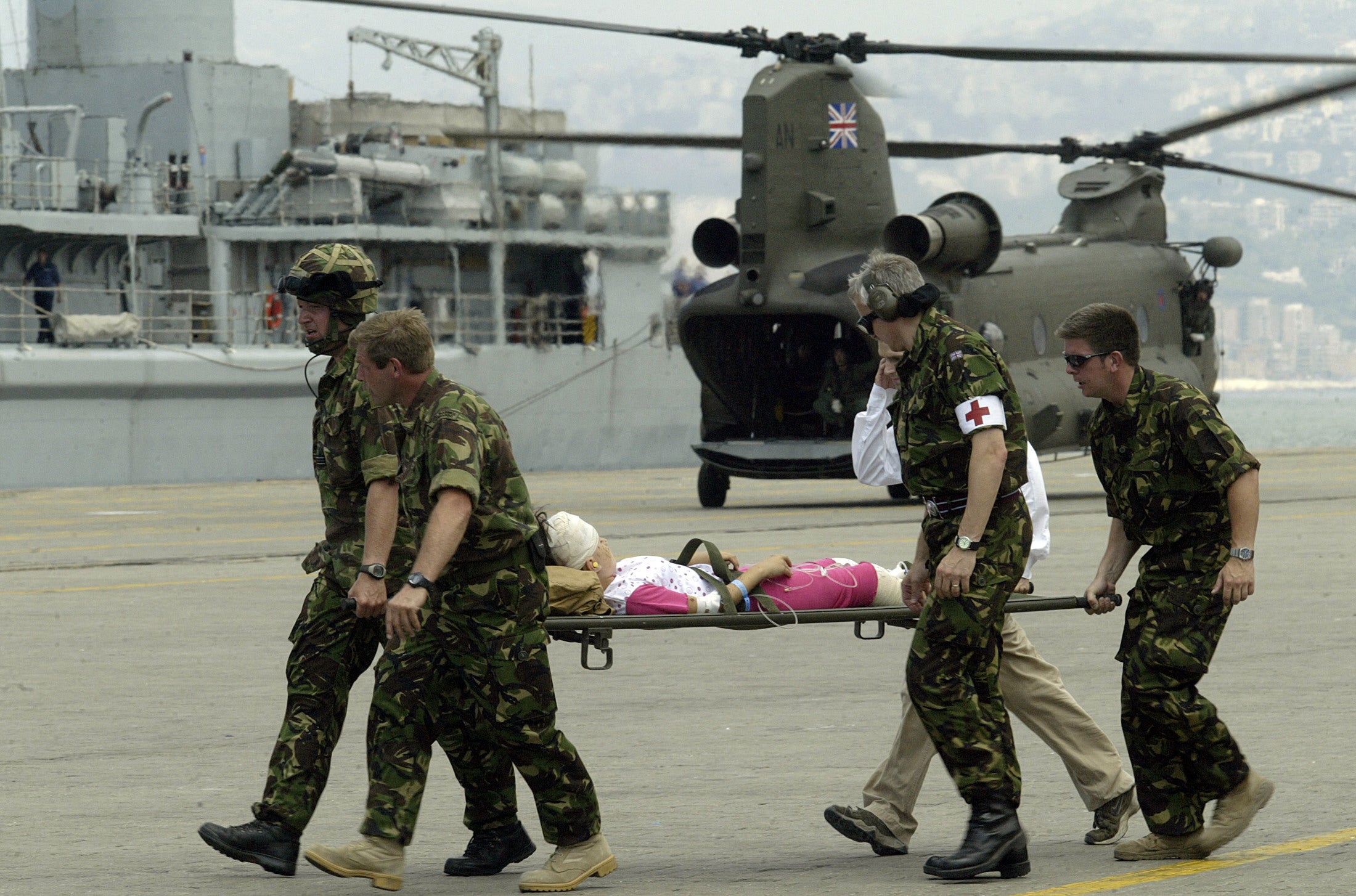I watched terrified Britons flee Lebanon in 2006 – I fear it will happen again
Israel has begun a ground invasion in Lebanon, including ‘intense’ fighting along the border, as part of a major assault on Hezbollah. Caroline Gammell witnessed the evacuations of British citizens 18 years ago in Beirut – she says the government should take heed of a blueprint that worked


Huddled on the dock, stooped from injury and fear, the wounded and the vulnerable waited patiently to be rescued.
Holding a few precious possessions and flinching from the sound of constant shelling, parents, children and the elderly watched intently as the footbridge from the vast British naval ship was lowered onto the quayside. With a quiet orderliness that comes with desperation, the 500-strong crowd quickly filed on board, clutching their British passports.
This was Beirut at the end of July 2006, after more than a week of heavy bombardment from Israel.
With up to 20,000 British citizens living in Lebanon, the UK devised a hasty plan to get them out, diverting naval resources from the Red Sea and the Mediterranean.
It was to be the largest evacuation of British citizens since Dunkirk in the Second World War. Codenamed Operation Highbrow, five UK warships assembled to rescue those who wished to escape. In the end, 4,500 people took up the offer.
On 21 July, the relief operation was led by HMS Bulwark, an 18,400-ton amphibious assault ship tasked with bringing people to safety.
I was part of a trio of British journalists – one TV broadcaster, one reporter and one photographer – flown by Chinook from RAF Akrotiri in southern Cyprus to cover the operation.
The flight, in the early hours of the morning, was punctuated by a quick fuel stop on the aircraft carrier HMS Illustrious while under passage in the Mediterranean Sea. Landing on the dockside right next to the evacuees, the three of us were turfed out and our places swiftly taken by the most seriously injured who were stretchered on board. We then went to join the hundreds waiting to escape.
The rules were clear: if you had a British passport, you were entitled to a place. If not, then tough. Those accepted on to the quay had to leave everything, not knowing when or how they would be back. Many of those crammed into HMS Bulwark left mothers, fathers and other family members behind.
Unlike the chaos of Operation Pitting – the much larger evacuation programme run in Afghanistan in August 2021, when Kabul fell to the Taliban – this was an orderly affair.
As people filed across the tarmac, I could see curls of smoke and hear the sounds of fighting in the distance. Once on board, evacuees were crammed into every cabin, galley and corridor: parents fixed up makeshift beds for their children, the elderly shifted uncomfortably on plastic chairs.
They were safe – and relieved to be out of danger. But beneath the quiet smiles was a deep distress at having to drop their lives and flee with little more than the clothes on their backs.
The Navy laid on food, hot drinks and blankets for the overnight voyage back to Limassol. Once there, the now exhausted refugees were led to processing centres to start the new chapter of their lives. Of those taken directly to Cyprus, just over 1,000 travelled on to the UK.
Completed in a matter of days, the evacuation was deemed a success, a feat of planning and execution. As war inches ever closer in 2024 and Sir Keir Starmer calls for the “immediate” evacuation of British citizens, the new government should take heed of a blueprint that worked.






Join our commenting forum
Join thought-provoking conversations, follow other Independent readers and see their replies
Comments